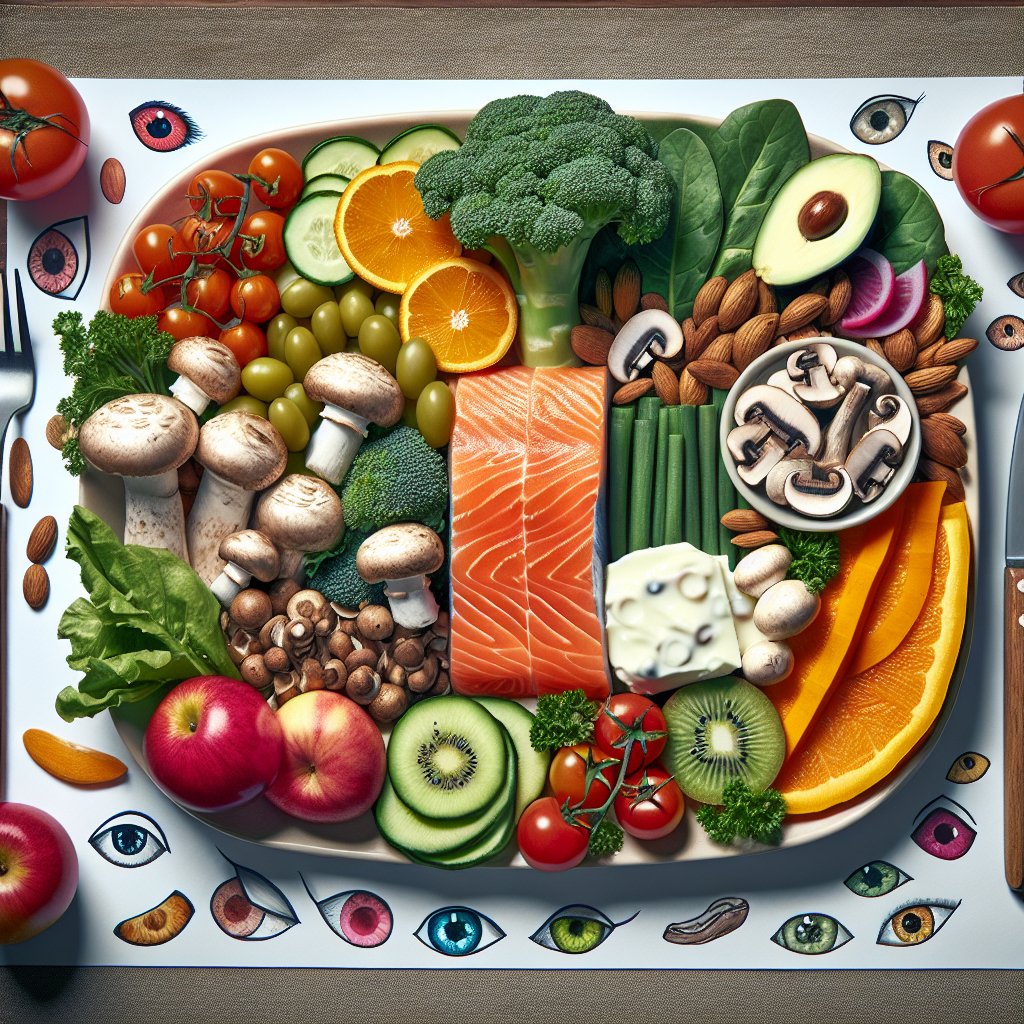Are Your Eye Floaters Linked to Vitamin D Deficiency? Discover the Connection and Prevention Tips Here!
Introduction to Vitamin D Deficiency and Eye Floaters
Let’s talk about the potential connection between eye floaters and vitamin D deficiency. First off, what is vitamin D deficiency? It occurs when your body doesn’t get enough vitamin D, which is crucial for bone health, immune function, and overall well-being. One lesser-known impact of vitamin D deficiency is its potential link to eye floaters. These are tiny specks or cobweb-like shapes that drift across your field of vision, often more noticeable when looking at a bright, plain surface. Eye floaters can be a nuisance, but could they also be a symptom of inadequate vitamin D levels? Let’s explore this intriguing possibility.
Overview of Eye Floaters and Their Causes
Eye floaters can be caused by the natural aging process, wherein the jelly-like substance in the middle of the eye becomes more liquid. This leads to microscopic fibers clumping together and casting shadows on the retina, resulting in the perception of eye floaters. Other causes can include inflammation in the back of the eye, retinal tears, or in rare cases, underlying medical conditions such as diabetes. The topic of eye floaters is of particular interest when considering the potential relationship with vitamin D levels. Let’s dive into the details!

How Vitamin D Relates to Eye Health
Vitamin D is often associated with bone health, but did you know that it also plays a crucial role in maintaining our vision? Research has revealed the significance of Vitamin D in supporting overall eye health. The retina, a layer at the back of the eye crucial for vision, contains Vitamin D receptors, indicating its importance for ocular function.
Connection Between Vitamin D Deficiency and Eye Floaters
Recent studies have suggested a potential link between Vitamin D deficiency and eye floaters. Eye floaters are tiny specks or cobweb-like strands that drift around in your field of vision. A study published in the Journal of Investigative Medicine found that participants with eye floaters were more likely to have lower levels of Vitamin D. Ensuring adequate Vitamin D levels might play a role in preventing or reducing the occurrence of eye floaters.
A. Common signs of Vitamin D deficiency
If you’re feeling more tired than usual, experiencing muscle pain or weakness, or frequently getting sick, you might be vitamin D deficient. Other common signs include bone and back pain, depression, hair loss, and impaired wound healing. There’s also a surprising link between vitamin D deficiency and eye floaters, those tiny specks or cobweb-like shapes that drift across your field of vision. But how does a lack of vitamin D affect our eyes, and what are the symptoms and impact of eye floaters?
B. Understanding the symptoms and impact of eye floaters
III. Symptoms of Vitamin D Deficiency and Eye Floaters
Research suggests that there is a connection between vitamin D deficiency and eye floaters. When your body lacks adequate vitamin D, it can impact the health of your eyes. Vitamin D plays a role in protecting the cells in the retina, and its deficiency has been linked to various eye conditions, including eye floaters. If you’re experiencing persistent eye floaters along with symptoms of vitamin D deficiency, it’s essential to consult with a healthcare professional to address these issues holistically.

Methods to Diagnose Vitamin D Deficiency
If you suspect that you may have a vitamin D deficiency and are experiencing eye floaters, you should speak with a healthcare professional. They can diagnose this deficiency through a simple blood test, specifically measuring the levels of 25-hydroxyvitamin D. This test is the most accurate way to determine if you are deficient in vitamin D. Once diagnosed, there are various treatment options and prevention strategies to consider.
Treatment Options and Prevention Strategies
If diagnosed with vitamin D deficiency, treatment may involve supplementation with vitamin D3, usually in conjunction with calcium. Your healthcare provider will determine the appropriate dosage based on the severity of the deficiency. Additionally, spending more time outdoors to allow your skin to naturally produce vitamin D through sunlight exposure can aid in prevention. Incorporating vitamin D-rich foods like fatty fish, cheese, and egg yolks into your diet can also contribute to maintaining healthy vitamin D levels.
Lifestyle Changes to Help Reduce Eye Floaters
If you’re experiencing eye floaters and suspect it might be related to a vitamin D deficiency, don’t fret. There are lifestyle changes you can make to reduce the occurrence of eye floaters. Studies have shown that maintaining a healthy lifestyle, including regular exercise and a balanced diet, can have a positive impact on eye health.
Treatment Options for Managing Eye Floaters
When it comes to managing eye floaters, various treatment options can be considered. Research suggests that increasing your intake of vitamin D through supplements or vitamin D-rich foods can help manage eye floaters associated with vitamin D deficiency. Additionally, maintaining a healthy weight and managing conditions like diabetes can also contribute to better eye health.

Consulting Healthcare Providers for Personalized Guidance
When it comes to understanding the link between vitamin D deficiency and eye floaters, it’s essential to consult healthcare providers for personalized guidance. Research studies have shown that there may be a connection between insufficient vitamin D levels and the development of eye floaters, but it’s crucial to seek professional advice to understand how this applies to your individual situation. Healthcare providers, especially ophthalmologists and nutritionists, can conduct thorough assessments, including blood tests to check vitamin D levels, and provide personalized recommendations for supplementation, diet, and lifestyle changes tailored to your specific needs.
Understanding the Risks of Self-Diagnosis and Treatment
Self-diagnosis and treatment when it comes to symptoms like eye floaters and potential vitamin D deficiency can pose significant risks. Without professional guidance, there’s a risk of misinterpreting symptoms or attempting treatments that may not be suitable or effective. Additionally, self-medicating with high doses of vitamin D supplements without proper assessment can lead to adverse effects. Seeking professional advice and guidance is crucial for accurate diagnosis, appropriate treatment, and overall health and safety.
Dietary Sources of Vitamin D
When it comes to preventing Vitamin D deficiency and eye floaters, incorporating the right foods in your diet is crucial. Dietary sources of Vitamin D include fatty fish like salmon, mackerel, and tuna, as well as fortified foods such as milk, orange juice, and cereals. Don’t forget to add egg yolks and cheese to your shopping list, as they’re also good sources of this essential nutrient!
Lifestyle Recommendations to Prevent Vitamin D Deficiency and Eye Floaters
In addition to diet, getting adequate sun exposure is key to preventing Vitamin D deficiency and eye floaters. Spending around 10-30 minutes in the sun between 10 am and 3 pm at least twice a week can help your body produce the Vitamin D it needs. Just don’t forget to protect your skin from burning! If you have fair skin, around 10 to 15 minutes is typically sufficient.


